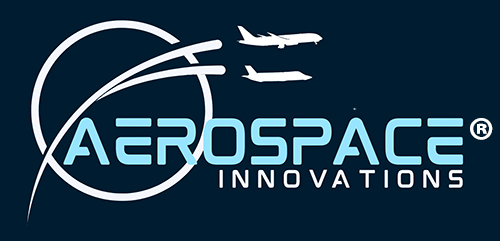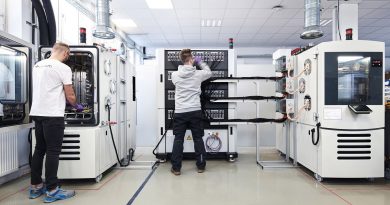Targeting the Achilles heel of Supply Chain Management
AI is increasingly being deployed across the aviation sector, but to what extent can it help navigate the turbulent waters of the supply chain?
“2024 made it absolutely clear that people want to travel,” proclaimed Willie Walsh, International Air Transport Association (IATA) Director General in January 2025, as he announced 2024 full-year and December 2024 passenger market performance. “Aviation growth reverberates across societies and economies at all levels through jobs, market development, trade, innovation, exploration, and much more.”
After a series of testing years for Airbus and Boeing, both are reporting strong order intakes and increased deliveries as production stabilises and rates increase over time.
At Airbus, the A320 Family programme continues to ramp up towards a rate of 75 aircraft per month in 2027. The company is now stabilising monthly A330 production at around rate four. On the A350, Airbus continues to target rate 12 in 2028, whilst on the A220, it continues to target a monthly production rate of 14 aircraft in 2026.
Over at Boeing, the 737 program has gradually increased production and maintains plans to reach 38 per month this year. The 787 program continued to stabilise production at five during Q1 2025, and Boeing still expects to increase to seven per month this year.
On the surface, things seem to be going in the right direction. But look closely, and Airbus has a confirmed backlog of 8,651 aircraft as of December 31, 2024. Boeing has a backlog of more than 5,600 airplanes: that translates to over seven years of production.
Addressing this growth path is not easy. As a 2024 article from McKinsey & Company observes, commercial aerospace OEMs and suppliers are dealing with multiple challenges in parallel. These include quality control issues, new regulations, talent shortages, and an increasingly splintered geopolitical environment. One of the more pressing issues—and one frequently cited—relates to persistent supply chain constraints.
Corridors of uncertainty
“The current state of the MRO supply chain is characterised by high volatility and uncertainty in demand, making planning and stability particularly challenging,” says Matt Porter, Head of Aerospace & Defence Industries, Sopra Steria UK.
“MRO managers are grappling with how to effectively manage these uncertainties to stabilise inventories and maintain service levels without escalating immobilised costs. This is a critical issue as traditional solutions have not proven to be entirely efficient.”
Announcing its Q1 2025 financial results, Brian J. West, Chief Financial Officer & Executive Vice President-Finance, confirmed that Boeing continues to make adjustments as needed and manage supplier by supplier based on inventory levels. “Over the past year, our buffer inventory has grown to promote stability across our production system. As production stabilises and rates increase over time, we plan to deliberately return buffer inventory to more normal levels.”
Porter says today’s supply chain managers face numerous pinch points. These include planning under uncertainties, where the unpredictable nature of demand and supply makes it difficult to create stable and reliable plans. “Managers must constantly adjust to new information and changing conditions,” he says.
Additionally, there’s disruption root cause analyses. “Identifying the root causes of disruptions is often complex,” says Porter. “Understanding where and why supply flows are blocked or delayed requires sophisticated analytical tools and processes.”
He also highlights end-to-end visibility and anticipation. “Achieving full visibility across the entire supply chain is a significant challenge. Managers need to see the state of all flows within the end-to-end supply chain to make informed decisions.” Lastly, he raises the issue of optimisation. “Making good recommendations for resource allocation, production capacities, and logistics re-routing is essential. This requires advanced optimisation techniques and tools.”
West says that Boeing has enough inventory for it to achieve the production rates mentioned. “We’ve got really good alignment with our key suppliers, fuselages, engines, everything looks pretty good.” West said the company would have to get through some “discrete moments” surrounding the current tariffs and ensuring the continuity of delivery. “But as we look a little further out, good alignment, plenty of inventory, feel pretty confident about the supply chains side of it.”
Digital deliveries
Aviation’s supply chain is a turbulent beast, characterised by the complexity of managing thousands of parts, each with its unique regulatory and compliance requirements. Boeing’s response to this daunting challenge is indicative of the current trends in MRO.
As exemplified by Boeing, Porter says that companies are increasingly focusing on agility and responsiveness to improve efficiency. This involves adopting flexible strategies that can quickly adapt to changing demands and supply disruptions. In such turbulent times, enhanced collaboration between suppliers, manufacturers, and service providers is becoming essential. Integrated systems that provide real-time data sharing and communication are being adopted to improve overall supply chain visibility and coordination.
And then there’s digital transformation, which Porter says is a growing trend for the MRO supply chain. This includes the use of advanced analytics, IoT, and AI to enhance predictive maintenance and inventory management.
At this year’s MRO Americas in Atlanta, ePlaneAI marked its appearance by unveiling its evolution from a digital marketplace to a full-suite provider of AI-powered aviation solutions.
“Our transition from a marketplace to AI-powered aviation solutions is a direct response to what the industry truly needs: efficiency, accuracy, and real-time automation,” said Meir Rozolio, CEO.
Writing in a company blog, Angel Marinov, Head of Innovation, said that “We’ve built a purpose-driven aviation intelligence platform designed to optimise procurement, inventory management, and maintenance workflows in real-time.”
The AI suite now includes AeroGenie, an intelligent enterprise resource planning (ERP) assistant that makes aviation data searchable and accessible in plain language. Essential metrics and reports can be instantly retrieved through simple commands, available at any moment.
Other features include Inventory AI, which predicts parts demand to optimise stock levels, minimise shortages, and reduce carrying costs. It provides real-time vendor integration for seamless ordering and analyses stock movement and usage rates. The suite also includes Document AI, which automates the review and validation of critical aviation documents, helping organisations strengthen compliance. Document AI dramatically reduces search and data retrieval time by extracting, analysing and indexing information from both structured and unstructured aviation documents.
Additionally, the platform includes Email AI, which automates request for quotation (RFQ) processing, speeding up response times and streamlining supplier communications. Email AI leverages advanced Large Language Models (LLMs) to intelligently read, categorise, and respond to email RFQs in 60-120 seconds. Using clustering models like K-Means and hierarchical clustering, it segments customer requests to prioritise high-value opportunities. It can also optimise pricing based on real-time market trends and customer data.
Agentic AI gets active
In an EY insight, Gaurav Malhotra, Supply Chain Technology Leader and EY Global Alliance Executive Sponsor, and Ayoub Abielmona, EY Global GenAI Supply Chain Leader profile how agentic AI is expanding the capabilities of demand forecasting, supply planning, inventory management, logistics optimisation and predictive maintenance. Looking ahead they say, agentic AI help organisations predict and mitigate future supply disruptions with limited human intervention.
They explain that while agentic AI also relies on an LLM, it primarily uses the LLM as a central coordination module or a decision-making tool that interprets complex, goal-oriented requests and then autonomously plans and controls the execution of internal or external tools to achieve the desired outcome. The overarching focus is on autonomy, with the LLM taking ownership of understanding requests, planning actions, executing tasks and optimising processes, with limited human oversight.
Making a difference
Porter says there are a number of benefits from using AI, including cost optimisation. Here, Porter says AI can help identify areas where costs can be reduced without compromising service levels. This includes optimising inventory levels, reducing waste, and improving operational efficiency. AI can also create digital twins of the supply chain to simulate various scenarios and predict outcomes. This helps in making data-driven decisions and preparing for potential disruptions.
Other benefits include continuously monitoring demand patterns and provide real-time insights, enabling better forecasting and planning. AI models analyse historical data to identify trends and forecast future demand. This enables airlines and suppliers to adjust their inventory levels proactively.
Further advantages are automated learning, whereby machine learning algorithms continuously learn from new data, improving their predictive capabilities over time. This adaptability is essential in the dynamic aviation industry, where demand can fluctuate rapidly. With natural language processing AI can process vast amounts of unstructured data, such as customer feedback and market reports, to extract insights that inform demand forecasting.
To this list, Porter adds virtual assistants which can be used for exogenous risks management and flows re-routing and automatic analyses.
AI-powered virtual assistants can help manage risks that are external to the supply chain, such as geopolitical events or natural disasters, by providing early warnings and recommending mitigation strategies. AI can also automate the re-routing of supply flows and perform automatic analyses to identify bottlenecks and optimise logistics.
Lufthansa Technik is collaborating with Microsoft in the use of artificial intelligence to optimise entire maintenance processes, as part of Digitize the Core”, a comprehensive initiative by Lufthansa Technik to drive forward the digitisation of the company’s core operational processes.
The initiative includes over 50 context-sensitive AI use cases based on Microsoft Azure AI Services and Microsoft Azure cloud. By using LLMs provided via Azure AI Services and a memory-enabled cognitive architecture, Lufthansa Technik aims to distill knowledge from vast amounts of data, including unstructured data such as work instructions. Much of the information is also hidden in sources such as code, folder structures, images, or charts. To answer complex questions effectively, this knowledge must be made accessible and linked to other data.
According to Florian Deter, Managing Director at Microsoft Germany, “AI is the pivotal technology of our time. It not only enables incredible breakthroughs that could hardly have been imagined before. In its development, security and data protection have the highest priority for us and for Lufthansa Technik.”
Dushyant Mohanty, Head of Consulting & Advisory for North America Aerospace and Defense at TCS, and Bhaskar Sharma, Aerospace & Defence Executive at TCS Switzerland cite that in product development, AI and GenAI can accelerate a ‘shift left’ supplier collaboration approach, building on digital threads and cloud-based engineering platforms.
According to the pair, this leads to “smarter component choices, reducing long-tail supply chain risks and costly redesigns. AI and GenAI can also be used to predict material shortages and swiftly source alternatives from tier 1 and tier 2 suppliers, optimising production processes without inflating inventory costs.”
Risk and challenge
In May 2023, the European Union Aviation Safety Agency (EASA) released the second version of its AI Roadmap which provides a comprehensive plan for the integration of AI in aviation, with a focus on safety, security, AI assurance, human factors and ethical considerations.
One chapter of the Roadmap identifies a set of common challenges that will require further consideration. This includes elaborating pertinent guarantees on stability and robustness of AI models and on the absence of ‘unintended behaviour’ in AI applications.
As the Roadmap draws attention to, due to the statistical nature of data-driven and statistical applications, they are subject to variability in their output for small variations on their input (that may even be imperceptible by a human). There is a need to investigate new methods to verify the stability and robustness of AI applications, as well as to evaluate the completeness of the verification. The use of formal methods as providing suitable verification means is further investigated. Such methods may as well be a means to compensate for the lack of coverage analyses, while observing closely and attentively the underlying scalability issues presented by these methods.
To the list of AI risks, Porter adds:
Data Continuity and Visibility: AI systems require continuous and high-quality data to function effectively. Ensuring data continuity and visibility across the supply chain is crucial but can be challenging due to siloed systems and data inconsistencies.
Change Management: Introducing new AI tools requires significant change management efforts to ensure adoption by employees. This includes training, communication, and addressing resistance to change.
Data Quality Assessment: The quality of data is paramount for AI systems to provide accurate insights. Ensuring data quality and integrity is an ongoing challenge.
AI Transparency: Making AI systems transparent and understandable to users is essential for building trust and ensuring adoption.
Human in the Loop: AI should be used as a decision support tool rather than a replacement for human judgment. Ensuring that humans remain in the loop is crucial for effective decision-making.
AI Ops: Implementing robust AI operations, including testing pipelines and monitoring, is essential to ensure the quality and reliability of AI systems
In addition, generative AI can sometimes identify patterns or objects in data that are non-existent and yield results that are either nonsensical or altogether inaccurate—a phenomenon known as a “hallucination.”
Introducing agents of change
With an awareness of these threats, those in the supply chain need to adopt best practices.
Porter says there are several strategies to implement. One surrounds AI Transparency. “Ensure that AI systems are transparent and explainable. Users should understand how AI recommendations are generated,” Porter advises. He also recommends using AI as a decision support tool, keeping humans in the loop to make final decisions.
Further best practices embrace data quality assessment. Porters says there is a need to regularly assess and improve data quality to ensure accurate AI insights. He also advises to implement robust AI operations, including testing pipelines and monitoring, to ensure the quality and reliability of AI systems.
Consideration should also be given to change management. “Invest in change management efforts to ensure employee adoption of new AI tools. This includes training, communication, and addressing resistance to change,” says Porter, who likewise champions continuous improvement. “Regularly review and update AI systems to incorporate the latest advancements and address emerging challenges,” he says. This helps maintain accuracy and relevance in predictions.
Thinking ahead
With AI now becoming a pervasive element within aviation, what future innovations can the industry expect over a five-to 10-year period?
Porter feels many will build upon those that currently exist.
“Generative AI and virtual assistants will become integral to operations management and decision support processes. These tools will help accelerate processes and improve efficiency,” he states. “Each step of the supply chain process will also have dedicated AI agents to optimise operations, from procurement to delivery.”
Porter believes that the use of advanced analytics and machine learning will become more pervasive, enabling real-time decision-making and predictive insights, while blockchain technology will be increasingly adopted to enhance transparency and traceability across the supply chain.
In addition, there will be a greater focus on sustainability, with AI and other technologies being used to reduce waste, optimise resource use, and minimise the environmental impact of supply chain operations.
Finally, Porter says that the deployment of autonomous systems, such as drones and robots, will become more common, further automating supply chain processes and improving efficiency.
AI has the possibility to benefit many aspects of the aviation industry, with supply chain optimisation just breaking the surface of possibilities.
By Alex Preston




